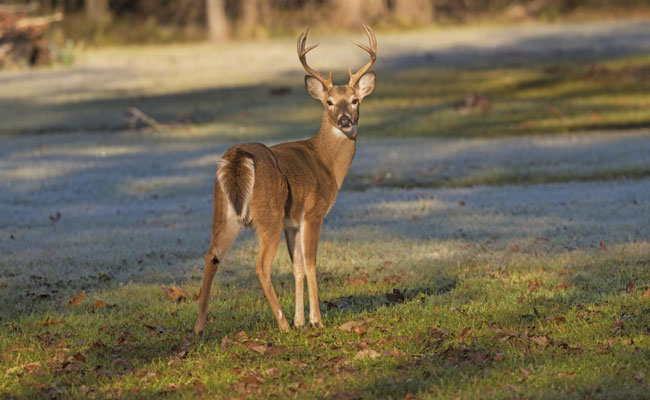In a significant discovery, the hog deer has been spotted for the first time at the Rajaji Tiger Reserve
Sakshi Education

- It is a solitary creature but sometimes spotted feeding in small groups in open fields when food there is plentiful.
- For the most part it is sedentary and does not migrate.
- Males tend to be territorial and mark their territory with glandular secretions.
- This species exhibits sexual dimorphism. The females are slightly smaller than males and lack antlers.
- It has a native geographic range throughout India, including the Himalayan foothill zone and Southeast Asia, including Burma and Thailand.
- Humans have introduced free-ranging populations of this deer in Sri Lanka, Australia and the United States, including Texas, Florida, and Hawaii.
- It appears to prefer dense forests; however, they are often observed in clearings, grasslands and occasionally wet grasslands.
- This variation is usually associated with time of year and food distribution.
- Rajaji Tiger Reserve is spread over three districts of Uttarakhand: Haridwar, Dehradun and Pauri Garhwal.
- It is situated along the hills and foothills of the Shiwalik ranges.
- In the year 1983, Rajaji Wildlife Sanctuary was merged with Motichur and Chilla wildlife sanctuaries and made into Rajaji National Park.
- It was named after the famous freedom fighter Rajgopalachari popularly known as "Rajaji"
- It's location in a transition zone between temperate western Himalaya and central Himalaya enhances the species diversity.
- Vegetation: The area is covered with diverse forest types ranging from semi-evergreen to deciduous and from mixed broad-leaved to Terai grassland and has been classified as Indus-Ganges Monsoon Forest type.
- Flora: Rohini, Palash, Shisham, Sal, Sandan, Khair, Arjun, Baans, Semul, Chamaror etc.
- Fauna: Tiger and Asian Elephants. Leopard, Jungle cat and Himalayan Black Bear etc.
>> Download Current Affairs PDFs Here
Download Sakshi Education Mobile APP

Published date : 09 Jan 2024 05:13PM



















